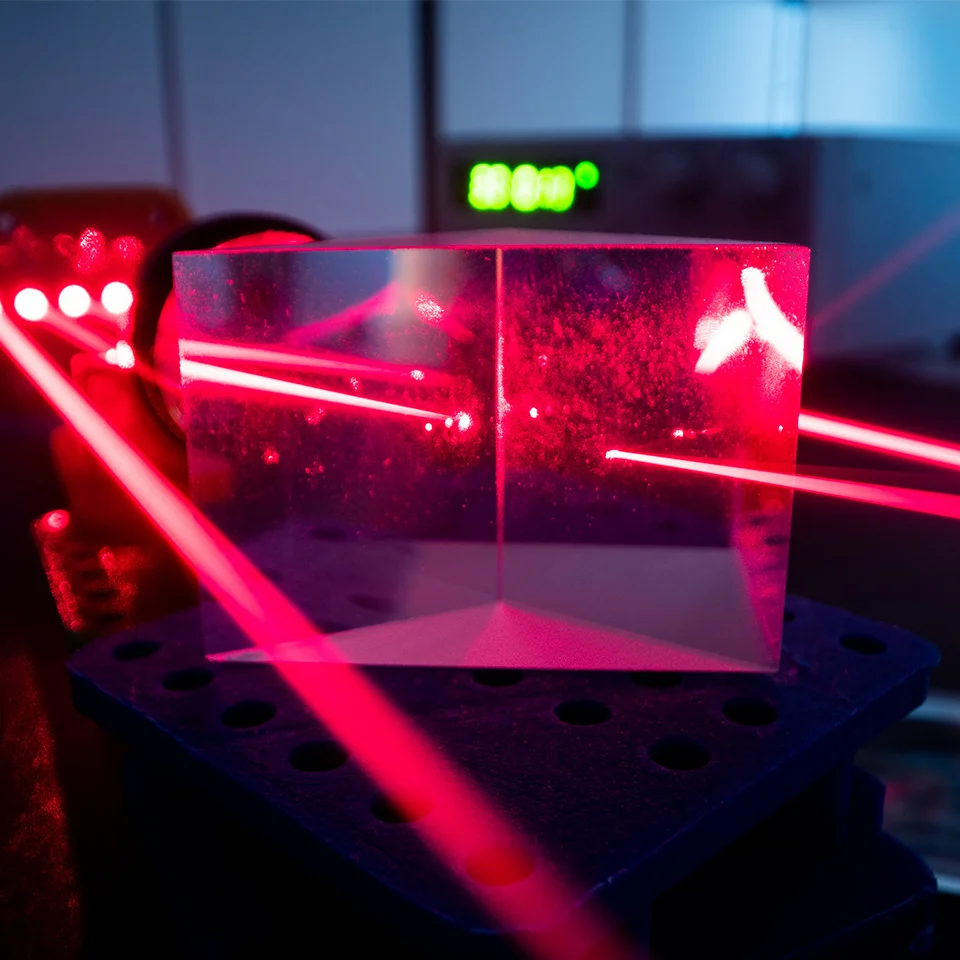Laser refers to the process and instrument of generating collimated, monochromatic, coherent light beams through stimulated radiation amplification and necessary feedback. Basically, laser generation requires three elements: a “resonator,” a “gain medium,” and a “pumping source.”
A. Principle
The motion state of an atom can be divided into different energy levels, and when the atom transitions from a high energy level to a low energy level, it releases photons of corresponding energy (so-called spontaneous radiation). Similarly, when a photon is incident on an energy level system and absorbed by it, it will cause the atom to transition from a low energy level to a high energy level (so-called excited absorption); Then, some of the atoms that transition to higher energy levels will transition to lower energy levels and emit photons (so-called stimulated radiation). These movements do not occur in isolation, but often in parallel. When we create a condition, such as using the appropriate medium, resonator, enough external electric field, the stimulated radiation is amplified so that more than the stimulated absorption, then in general, there will be photons emitted, resulting in laser light.
B. Classification
According to the medium that produces the laser, the laser can be divided into liquid laser, gas laser and solid laser. Now the most common semiconductor laser is a kind of solid-state laser.
C. Composition
Most lasers are composed of three parts: excitation system, laser material and optical resonator. Excitation systems are devices that produce light, electrical or chemical energy. At present, the main incentive means used are light, electricity or chemical reaction. Laser substances are substances that can produce laser light, such as rubies, beryllium glass, neon gas, semiconductors, organic dyes, etc. The role of optical resonance control is to enhance the brightness of the output laser, adjust and select the wavelength and direction of the laser.
D. Application
Laser is widely used, mainly fiber communication, laser ranging, laser cutting, laser weapons, laser disc and so on.
E. History
In 1958, American scientists Xiaoluo and Townes discovered a magical phenomenon: when they put the light emitted by the internal light bulb on a rare earth crystal, the molecules of the crystal will emit bright, always together strong light. According to this phenomenon, they proposed the “laser principle”, that is, when the substance is excited by the same energy as the natural oscillation frequency of its molecules, it will produce this strong light that does not diverge – laser. They found important papers for this.
After the publication of Sciolo and Townes’ research results, scientists from various countries proposed various experimental schemes, but they were not successful. On May 15, 1960, Mayman, a scientist at Hughes Laboratory in California, announced that he had obtained a laser with a wavelength of 0.6943 microns, which was the first laser ever obtained by humans, and Mayman thus became the first scientist in the world to introduce lasers into the practical field.
On July 7, 1960, Mayman announced the birth of the world’s first laser, Mayman’s scheme is to use a high-intensity flash tube to stimulate chromium atoms in a ruby crystal, thus producing a very concentrated thin red light column, when it is fired at a certain point, it can reach a temperature higher than the surface of the sun.
Soviet scientist H.Γ Basov invented the semiconductor laser in 1960. The structure of semiconductor laser is usually composed of P layer, N layer and active layer which form double heterojunction. Its characteristics are: small size, high coupling efficiency, fast response speed, wavelength and size fit with the optical fiber size, can be directly modulated, good coherence.
Six, some of the main application directions of laser
F. Laser communication
Using light to transmit information is very common today. For example, ships use lights to communicate, and traffic lights use red, yellow, and green. But all of these ways of transmitting information using ordinary light can only be limited to short distances. If you want to transmit information directly to distant places through light, you can not use ordinary light, but only use lasers.
So how do you deliver the laser? We know that electricity can be carried along copper wires, but light cannot be carried along ordinary metal wires. To this end, scientists have developed a filament that can transmit light, called optical fiber, referred to as fiber. Optical fiber is made of special glass materials, the diameter is thinner than a human hair, usually 50 to 150 microns, and very soft.
In fact, the inner core of the fiber is a high refractive index of transparent optical glass, and the outer coating is made of low refractive index glass or plastic. Such a structure, on the one hand, can make the light refracted along the inner core, just like water flowing forward in the water pipe, electricity transmitted forward in the wire, even if thousands of twists and turns have no effect. On the other hand, the low-refractive index coating can prevent light from leaking out, just as the water pipe does not seep and the insulation layer of the wire does not conduct electricity.
The appearance of optical fiber solves the way of transmitting light, but it does not mean that with it, any light can be transmitted to very far away. Only high brightness, pure color, good directional laser, is the most ideal light source to transmit information, it is input from one end of the fiber, almost no loss and output from the other end. Therefore, optical communication is essentially laser communication, which has the advantages of large capacity, high quality, wide source of materials, strong confidentiality, durability, etc., and is hailed by scientists as a revolution in the field of communication, and is one of the most brilliant achievements in the technological revolution.
Post time: Jun-29-2023






